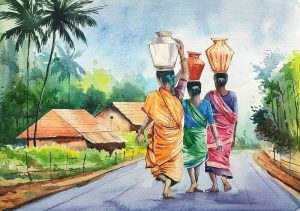Watercolor drawing is a captivating and expressive form of art that utilizes water-based pigments to create beautiful and translucent paintings. Artists use watercolor paints, which are typically vibrant and come in a wide range of hues, to produce delicate and fluid compositions. The unique quality of watercolor lies in its transparency and the ability to layer colors to achieve various effects.
A Guide to Watercolor Drawing
Welcome to the vibrant world of watercolor drawing! Whether you’re a seasoned artist or a curious beginner, this guide will provide you with the essential knowledge and inspiration to embark on your watercolor journey.
Getting Started:
- Watercolors: Invest in good quality watercolor paints. Start with a basic palette of primary colors (yellow, red, blue) and a few secondary colors (green, orange, purple).
- Brushes: Choose a variety of round, flat, and detail brushes in different sizes. Natural hair brushes like squirrel or synthetic brushes are good options.
- Paper: Watercolor paper is crucial. Opt for 140lb or heavier cold-pressed paper for its absorbency and texture.
- Other supplies: A water container, palette, pencil, eraser, and masking tape are helpful tools.
Understanding Watercolors:
- Pigments and Transparency: Watercolor paints are transparent, allowing light to shine through and creating layering effects. Experiment with mixing colors to create new shades.
- Water Control: Learn to control the amount of water on your brush. More water dilutes the color, while less water creates bolder strokes.
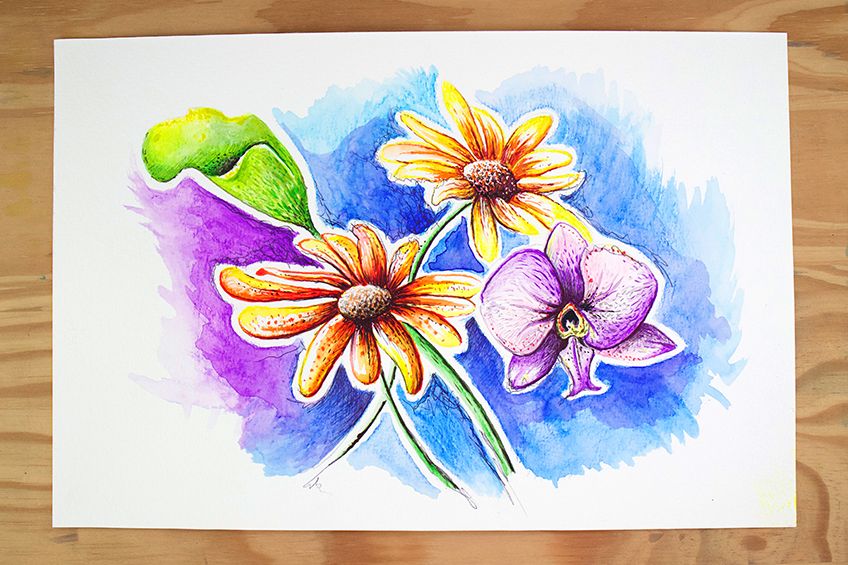

Mastering the Basics of Watercolor Drawing
Mastering the basics of watercolor drawing takes you from dipping your toes into the vibrant world of color washes to confidently crafting stunning artworks. Here’s how to level up your watercolor skills:
Sharpening Your Watercolor Technique:
- Brush control: Master varying your brush pressure and speed for precise strokes and delicate washes. Experiment with different brush angles and textures for unique effects.
- Water control: Learn to harness the magic of water! Understand how much water to load on your brush for different effects. Wet-on-wet creates soft blends, while wet-on-dry allows for crisp details.
- Layering and transparency: Embrace the layering potential of watercolors. Start with light washes and gradually build darker tones layer by layer. Remember, watercolors are inherently transparent, allowing light to play through your layers and creating unique visual depth.
Crafting Compelling Compositions:
- Rule of thirds: Divide your painting space into thirds both horizontally and vertically. Place key elements at the intersections for a balanced and dynamic composition.
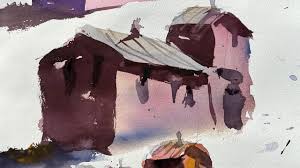
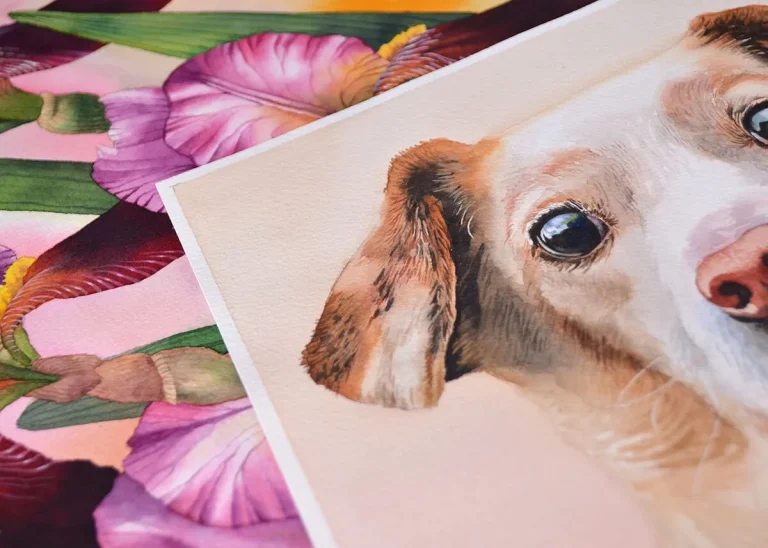
Watercolor Drawing for Beginners
Embarking on your watercolor journey as a beginner can be both exciting and a little daunting! But fear not, fellow artist! Here’s a beginner-friendly guide to help you navigate the vibrant world of watercolor drawing:
Getting Started:
- Watercolors: Invest in beginner-friendly paints. A basic palette of primary colors (yellow, red, blue) and a few secondary colors (green, orange, purple) is perfect for starters. Experiment with different brands and find one that suits your budget and style.
- Brushes: Choose a variety of round brushes in different sizes (size 6-12 is a good range). Synthetic brushes are more affordable and easier to maintain than natural hair brushes.
- Paper: Watercolor paper is crucial! Opt for 140lb or heavier cold-pressed paper, which absorbs water well and holds details.
- Other supplies: A water container, palette, pencil, eraser, and masking tape are helpful tools.
Unleashing the Magic of Watercolors:
- Water control: Master this key element! Learn how much water to load on your brush to achieve different effects. Wet-on-wet creates soft blends, while wet-on-dry allows for sharper details. Practice varying brush pressure and speed for expressive strokes.
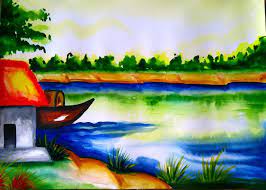
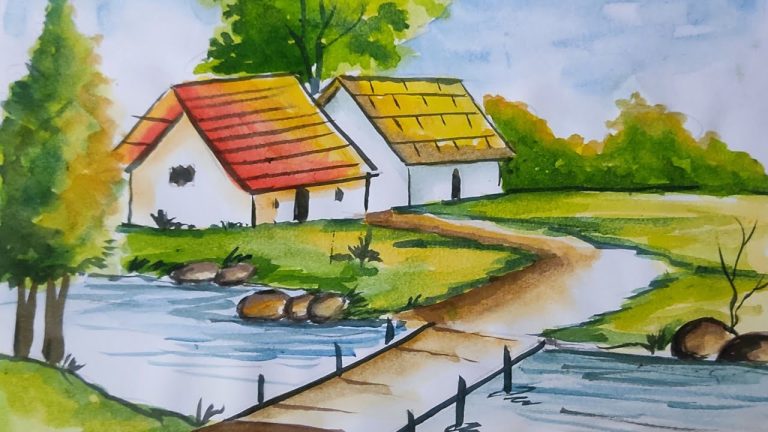
A Step-by-Step Save Watercolor Drawing
Ready to create a stunning watercolor masterpiece that you can cherish forever? Let’s embark on a step-by-step journey that incorporates both artistic expression and sustainability! We’ll use readily available materials and eco-friendly practices to create a unique piece that reflects your creativity and environmental consciousness.
Gather your materials:
- Recycled paper: Breathe new life into an old cardboard box, brown paper bag, or torn scrap paper as your painting surface. This adds texture and reduces paper waste.
- Eco-friendly paints: Opt for vegetable-based or organic watercolor paints to minimize chemical impact. Experiment with earth tones or vibrant hues, depending on your vision.
- Pencil and eraser: Choose a refillable pencil and a compostable eraser to further reduce waste.
- Natural objects: Incorporate leaves, twigs, feathers, or flower petals from your garden or local market. This adds beauty and promotes local produce over packaged materials.
- Natural fixative: Consider using a plant-based or water-soluble fixative to preserve your artwork without harsh chemicalsur story.
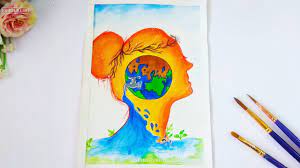
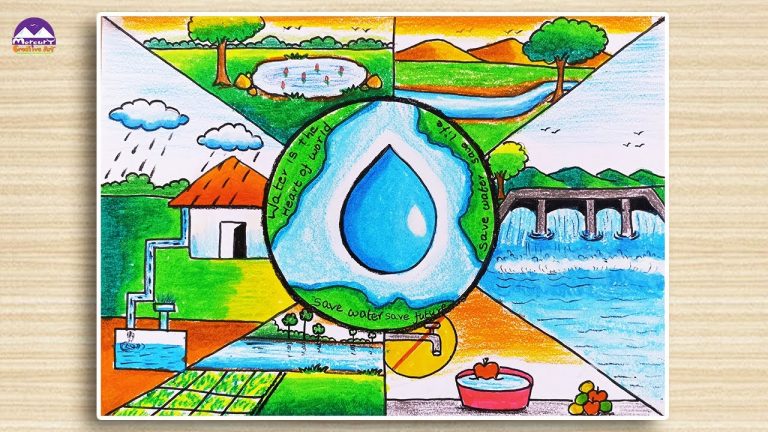
Watercolor Drawing Techniques
Delving into the world of watercolor drawing opens up a vast ocean of creative possibilities. To navigate this vibrant sea, let’s explore some essential techniques that will equip you to paint breathtaking masterpieces:
Layering and Washes:
- Wet-on-wet: Apply washes of color onto a dampened paper for soft blends and seamless transitions.
Wet-on-dry: Paint washes onto dry paper for sharper edges and defined details. Perfect for foliage, delicate brushstrokes, and crisp architectural lines.
- Layering: Build depth and richness by applying successive washes of varying intensities. Lighter washes first, gradually adding darker layers for depth and control.
Brushwork and Texture:
- Dry brushing: Utilize a brush loaded with minimal paint to create textured lines and subtle highlights. Ideal for depicting rough surfaces like bark, feathers, or dry foliage.
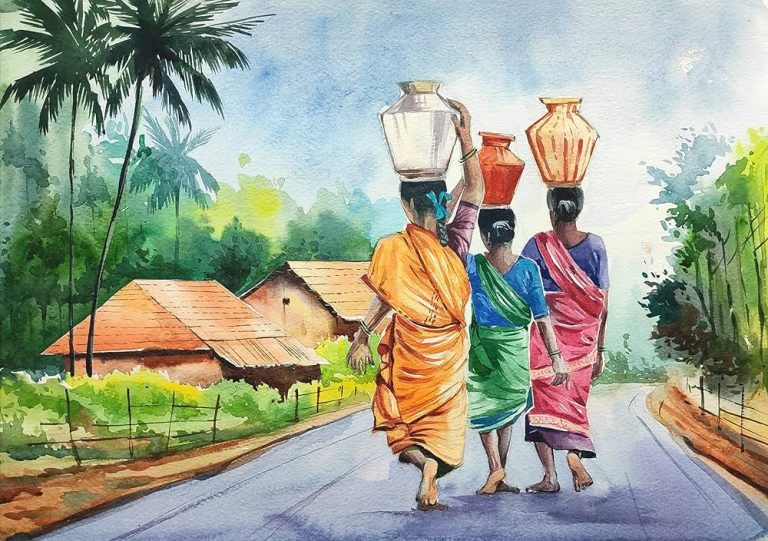
Frequently Asked Questions (FAQs)
Watercolor drawing is a painting technique that uses water-based pigments in the form of paint to create artworks on paper. The paint is typically translucent, allowing for layering and a wide range of effects. Watercolor is known for its fluidity, transparency, and the unique way pigments interact with water.
Basic materials include watercolor paints, watercolor paper, brushes, and water. Additional items like a palette for mixing colors, masking tape for securing the paper, and absorbent materials like tissues or sponges for various techniques can enhance your watercolor experience.
Watercolor differs from other painting mediums like acrylic or oil because it is water-based. It relies on the transparency of pigments and the interaction with water, allowing for a more delicate and ethereal appearance. Watercolor is often preferred for its spontaneity and quick drying time.
Related posts:
- Lord Shiva Drawing : The Spiritual Essence in Shiva Artwork
- Parrot Drawing
- Pencil Drawing Images : A Beginner’s Guide to Drawing
- Pencil Drawing Pictures : Simple Steps for Drawing
- Pokemon Drawing : Pokemon Drawing for Beginners
- Rabbit Drawing : A Guide to Rabbit Drawing
- Republic Day Drawing : Republic Day Drawing Ideas
- Save Earth Drawing : Drawing for Beginners
